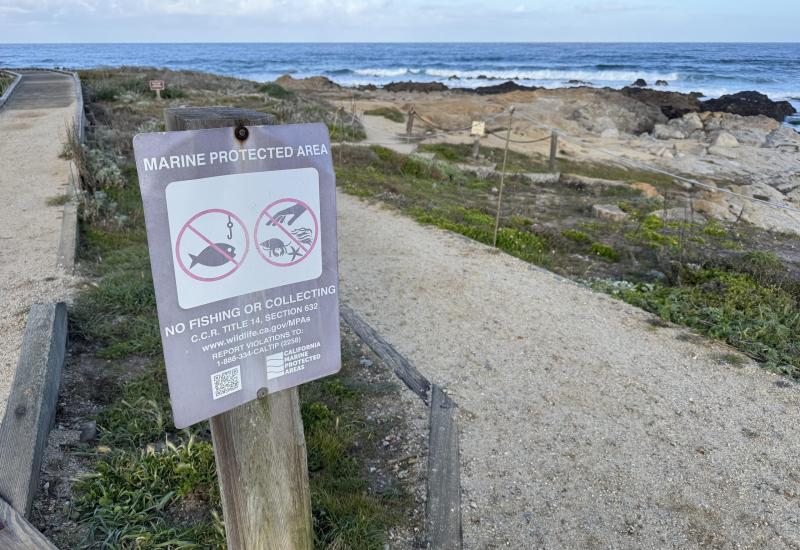Finding Common Ground Between Divers and Seabirds

Patrick WebsterA curious cormorant divebombs the author’s camera.
I’m approaching 100 feet deep and feeling fully narked. My bubbles sound metallic, vision narrowing—whoa! What was that? A dark blur kicks furiously by my face. The paddling ceases, and it starts to rise, long neck craning back at me as it flies away to the surface. Through my nitrogenous haze I can barely muster a thought: A… bird?
For nearly 200 million years, the ancestors of these aquatic avians (a cormorant, in my case) ruled the Earth. Chances are good that, if you once were a dinosaur in an aquatic environment, you were on your way to a sedimentary fossilization station. Even before the grand planetary reset 66 million years ago (a bad case of asteroid rage), the water was an unfamiliar place for the raptor relatives running things on land.
So how lucky are we to exist in a time filled with waterfowl above, beside and below the sea surface? Beachgoing waders, bobbing gulls, snorkeling shearwaters, plunging pelicans and freediving penguins. And of all the life we may find by the seashore, it’s arguably the birds that empathize most with a diver’s plight of being a land-evolved animal trying to give the water a go.
On a fundamental level, success in the atmosphere is detrimental to succeeding in the hydrosphere. And modern diving seabirds all come from the flighted flock, all of whom have invested in some physiological trade-offs to the adaptations that made their ancestors successful in the skies.
Same as a human diver, seabirds face a conundrum: If you can’t breathe underwater, you have to take your breaths with you. And so they have become their own full-body scuba bottle, with dark reddishbrown muscles thick full of oxygen-binding myoglobin fed by syrupy hemoglobinrich blood.
Even so, most seabird dives are very short, a few minutes tops, with penguins maxing out around 20 minutes. All other feats of avian diving, from shallow duck dips to hundred-foot auk efforts, are short bounces usually concluding with a rapid, buoyant ascent to the surface, because it’s hard to stay down when you’re a featherweight! Diving with the same hollow bones and feathered insulation that keep seabirds aloft is like snorkeling with floaties on. All of that extra blood acts like a weight belt, and many seabirds have denser bones the more dive-adapted they’ve become, but just like our dive luggage, every gram counts when it’s time to fly home!
Hence, many oceangoing birds like loons, mergansers and grebes are content frantically kicking against Archimedes’ principles so that migration remains an option. But eventually, just as with human divers, a commitment to deeper diving requires new equipment configurations. The body becomes more football-shaped, legs move backward as rudders and shorter, stubbier wings unfurl to fly through the water.
Related Reading: H2Organisms: Exploring the Intricate World Below the Surface
The result is a collection of black and white bowling pins occupying nearshore ecological lanes—the alcids to the north and penguins to the south of the equator. The extinct great auk and modern manchots forwent flight in favor of extended diving, while puffins, auklets and guillemots huff and puff their way as “flying potatoes” at the very limits of flight baggage allowance.
And therein lies one of the least appreciated aspects of seabirds and the waters they patrol. Unlike marine mammals with a thick blubber layer to keep them warm and resupplied over time, nonpenguin seabirds can’t afford much extra insulation. Trails of warm bubbles venting from their feathery drysuits as they go, seabirds rely on abundant, rich foods to power their feverish internal furnaces. Seabirds then are some of the best indicators of the health of a particular environment, their existence heavily subsidized by aquatic exports.
So, while a whale may be able to carry on in search of greener planktonic pastures, seabirds are often committed to their local area, working harder than most to eke out a living from the surrounding sea on thin margins—much like many of us dive professionals! The next time you’re gearing up for a dive, glance around and see what water-associated birds may be giving you a nod and some wings up for your efforts—you may just be birds of a feather on a dock together.
Related Reading: 7 Epic Surface Interval Adventures for Liveaboard Divers










